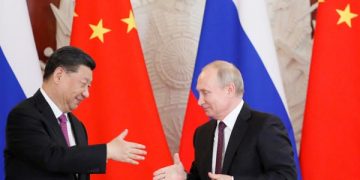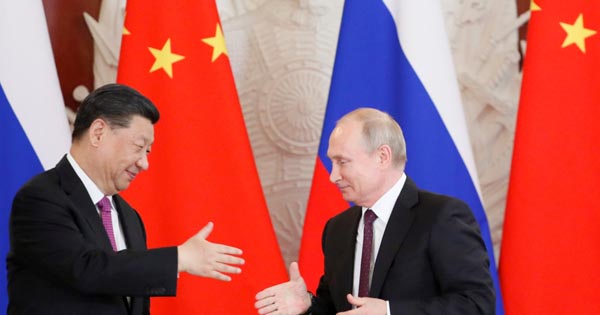CGTN
The joint initiatives and statements delivered by China and Russia in the context of the meeting between the leaders of the two countries reveals the tremendous potential that China and Russia have in boosting bilateral cooperation as well as in providing greater support for the world economy.
The range of issues covered by these statements is impressive and covers international and bilateral trade as well as the system of global governance and the countries’ cooperation in international organizations and groupings.
In the economic sphere, Russia values its cooperation with China given the size of its market for Russian agricultural goods, exports of services, manufactured products as well as oil and gas resources. Also important may be China’s role as an investor in Russia’s economy in view of the sizeable decline in investment flows from the West.
For China, Russia offers an important pillar in the evolving economic architecture of Eurasia, including in terms of “East-West” connectivity, trade and investment. Russia is also a major reliable source of energy resources for China and an important gateway into the broader Commonwealth of Independent States (CIS) region.
On the geopolitical front, China and Russia are crucial allies in advancing a multipolar world order that broadens the possibilities for new reserve currencies, new international development institutions and other elements of global economic architecture that render globalization more inclusive for emerging markets.
A key barometer of the bilateral economic relations between China and Russia is the dynamics of mutual trade turnover. In 2021, the trade turnover between China and Russia reached a record level of $140 billion and both countries are making notable headway in reaching the goal of increasing mutual trade to $200 billion.
In this respect, the declarations made by Russian President Vladimir Putin that Russia would expand exports of gas to China highlight Russia’s capability to diversify its gas supplies away from the West and towards the East. With the West seeking gas supply sources as alternative to Russia, China in particular and Asia in general are becoming a key focus in Russia’s energy strategy.
Boosting cooperation in the gas sector will enable the two countries to raise the ambition for mutual trade to new highs and reach the goal of $200 billion. Other areas of mutual trade cooperation may include the services sector, including tourism as well as high-tech sector development.
There are also ambitious goals in the investment sphere – according to Putin, the portfolio of investment projects of the inter-governmental committee on investment cooperation exceeds $120 billion, covering 65 investment projects in such sectors as infrastructure construction, extraction and processing of raw materials and agriculture.
Of particular importance is the declaration that China and Russia would step up cooperation in bringing closer together China’s Belt and Road Initiative (BRI) and the Eurasian Economic Union (EAEU). This is one of the areas that may deliver tangible benefits in terms of expanding the Russia-China investment cooperation, most notably in the sphere of transportation connectivity.
The key focus of the cooperation between China and Russia currently centers on the integration of China’s BRI and the EAEU. This cooperative effort, referred to as “integration of integrations,” is meant to supply greater connectivity to the Eurasian economic space via infrastructure development.
Another crucial area of the China-Russia investment cooperation is likely to be “green development” and the advancement of the environmental agenda – both countries made important strides in this area last year and the formation of a joint “green investment portfolio” among the development institutions of Russia/EAEU and China could be a significant further step forward.
The important point is that in dealing with the challenges faced by landlocked economies in Eurasia, the BRI and the EAEU projects complement and reinforce each other – a stronger Eurasian Union becomes more competitive as the main connecting line between Europe and Asia while the advancement of the BRI reinforces the connectivity and integration among the member countries of the EAEU.
In the end, it is through regional economic integration that developing landlocked countries in Eurasia can transform geography from what is perceived as a handicap into strength as greater integration allows Eurasian countries to be more competitive in intermediating the flow of investment and trade between the East and the West in such integration projects as the BRI or the EAEU.
One of the key references in the joint China-Russia statement was made with respect to Russia’s support for China’s BRICS chairmanship this year. Both sides underscored their support for deepening the BRICS+ format of cooperation among the regional integration arrangements of developing economies.
This regional format for the “BRICS+” framework is perhaps the first time that such a format has been advanced explicitly and supported by China and Russia on the global level. It opens opportunities to exploit the so-called “integration of integrations” in order to broaden the communication lines and venues for cooperation across the economies of the Global South.





